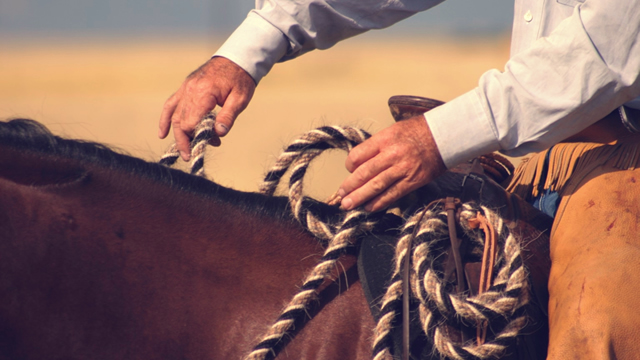Written by Martin Black
This article originally appeared in Eclectic Horseman Issue No.64
Why can one rider have trouble getting a horse to respond and another rider take the same horse and get along great? We may be familiar with the influence of feel and timing, but something that could be quicker for the rider to learn is the effect of the rein or reins in different positions.
We can observe different places we position one or both reins and note the response we get from our horses. Also, note the direction of pull along with the amount and time of pressure applied in relation to the horse’s response. It makes no difference whether we wanted the response they gave us. The important thing to note is what action got what reaction.
Experimenting with the following rein positions can potentially give you completely different results: try pulling one rein to your hip, or pulling straight out from the horse’s shoulder, in front of the saddle lifting the rein against the wither, or with a short rein lifting and pushing against the jaw. All this is done with one rein, different lengths, different directions and different amounts of pressure, to get totally different responses.
Using one rein to get them to start or stop their feet will get the horse to respond without pulling on our hands as much as they can when we pull on both reins. For example, if we pull both reins evenly to stop and the horse doesn’t respond with the feet properly and starts pulling on our hands, we can relax one rein and pull on the other rein enough to put a bend in their neck. Then they won’t be pulling as hard as when their neck is straight and this can transmit through the loin to the hindquarter which will step to one side instead of pushing straight ahead, which will help them to slow down.
When backing, if they are heavy, we can take one rein to move the hind feet first, then draw both reins to get the front feet to follow the hind feet back.
Whether it is speed regulation, stop, back, change of direction, or any combination thereof, there is a place that can maximize the message you desire by positioning the rein. Once the horse learns how to interpret our desire and learns how to prepare to do what we are asking, our hands don’t need to be in such drastic positions and we can become more uniform with our signals.
Once we understand the effects of one rein, then we can realize the difference when we add the second rein. Again, experimenting with the position and pressure of each rein and all the effects of it; head elevation, speed or change of direction. It is important to identify how the horse places their feet when changing direction. The front quarters can be reaching left while the hindquarters are reaching right, or both front and hind can be reaching the same direction, or one can be neutral, pivoting while the other has all the motion. Also note whether they are in a forward motion or a reverse motion. All of these variations can change because of the position of the rein.
Instead of us trying to force confusing messages on our horses, if we can step back and observe the cause and effect, we learn from that and understand that the horse isn’t trying to frustrate us and make trouble for themselves. The horse is always looking for the path of least resistance. Although we may not understand why they do what they do, we can understand what we did to cause them to do it, and use that to get what we want.
This article originally appeared in Eclectic Horseman Issue No.64
https://eclectic-horseman.com/mercantile/special-sets/horsemans-gazette-issues-no-29-32/


